
B&W, 1963, 88/92m.
Directed by Mario Bava
Starring Leticia Roman, John Saxon, Robert Buchanan, Valentina Cortese, Dante DiPaolo
Arrow (Blu-Ray & DVD) (UK RB/R2 HD/PAL) / WS (1.66:1 / 1.78:1) (16:9), Anchor Bay (US R1 NTSC), Films sans Frontières (France R2 PAL), Image (US R1 NTSC), Sinister (Italy R2 PAL) / WS (1.66:1) (16:9)

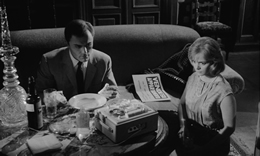 departure for director Mario Bava after he took horror fans by storm with his classic Black Sunday. Here for the first time he turned his camera to modern Rome, where naive American whodunit fan Nora Davis (Fanny Hill's Roman) flies in to visit her Aunt Adele. After unknowingly pocketing some hemp-laced cigarettes from a charming man on the plane, Nora reaches her aunt's apartment and meets the handsome Dr. Marcello Bassi (Saxon), who informs Nora that her aunt is not in the best of health. That night Nora is horrified to witness Adele dying of a heart attack and flees out into the street, where a mugger leaves her unconscious. In a daze Nora awakens to hazily witness the stabbing death of a young woman in the street, then passes out. At the hospital no one believes Nora's story, so she's left with only Marcello to help her uncover the truth. Nora quickly comes to believe that a killer known for a series of gruesome "Alphabet Murders" is still at large in the city and may have targeted our heroine as the next victim.
departure for director Mario Bava after he took horror fans by storm with his classic Black Sunday. Here for the first time he turned his camera to modern Rome, where naive American whodunit fan Nora Davis (Fanny Hill's Roman) flies in to visit her Aunt Adele. After unknowingly pocketing some hemp-laced cigarettes from a charming man on the plane, Nora reaches her aunt's apartment and meets the handsome Dr. Marcello Bassi (Saxon), who informs Nora that her aunt is not in the best of health. That night Nora is horrified to witness Adele dying of a heart attack and flees out into the street, where a mugger leaves her unconscious. In a daze Nora awakens to hazily witness the stabbing death of a young woman in the street, then passes out. At the hospital no one believes Nora's story, so she's left with only Marcello to help her uncover the truth. Nora quickly comes to believe that a killer known for a series of gruesome "Alphabet Murders" is still at large in the city and may have targeted our heroine as the next victim.
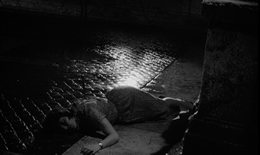 light, shadow, and decor. The plot is a lot of fun as well as it smushes together some obvious Hitchcock allusions (not surprising given the Italian title), Edgar Wallace, and an obvious homage to Agatha Christie's The ABC Murders with the killer's modus operandi. The whodunit is basically a mechanism to propel the film from one setpiece to the next with the audience left in the dark as to the killer's identity until the very end, allowing Roman to trot from one wide-eyed scene of menace to another.
light, shadow, and decor. The plot is a lot of fun as well as it smushes together some obvious Hitchcock allusions (not surprising given the Italian title), Edgar Wallace, and an obvious homage to Agatha Christie's The ABC Murders with the killer's modus operandi. The whodunit is basically a mechanism to propel the film from one setpiece to the next with the audience left in the dark as to the killer's identity until the very end, allowing Roman to trot from one wide-eyed scene of menace to another. 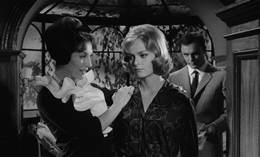
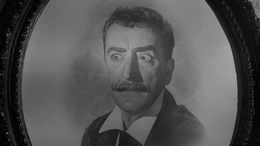
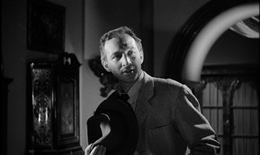 regular Bava commentator and All the Colors of the Dark author Tim Lucas, who explains the film's cinematic importance and goes into the details involving the two different cuts. Saxon also appears for a 9-minute interview, "Remembering the Girl," in which he reflects on his less-than-stellar relationship with Bava presumably due to a misunderstanding about the nature of the project itself.
regular Bava commentator and All the Colors of the Dark author Tim Lucas, who explains the film's cinematic importance and goes into the details involving the two different cuts. Saxon also appears for a 9-minute interview, "Remembering the Girl," in which he reflects on his less-than-stellar relationship with Bava presumably due to a misunderstanding about the nature of the project itself.
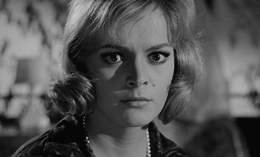 element-related issues (a missing or jumpy frame or iffy splice here and there), it's a miraculous salvage job for a film that seemed to be gone forever just a short time ago. Like Black Sabbath, the film was shot with multiple framing in mind; in Italy it was 1.66:1, while internationally it was screened as narrow as 1.85:1. The Arrow version is presented at 1.78:1, which feels fine and seems to work compositionally with a slight bit of vertical information less than the Italian version. For example, compare this shot from the AIP cut and this one from the Italian. The AIP version is also brighter and sports a slicker, cleaner appearance; which one is preferable is likely to be a matter of personal taste. The Italian version upgrades nicely to HD as well with the standard 1.66:1 framing and identical damage marks compared to past releases, while the LPCM mono tracks for both sound fine. The optional English subtitles in normal white type (for both versions) are also easier on the eyes than the sometimes garish, large yellow font on the Anchor Bay disc.
element-related issues (a missing or jumpy frame or iffy splice here and there), it's a miraculous salvage job for a film that seemed to be gone forever just a short time ago. Like Black Sabbath, the film was shot with multiple framing in mind; in Italy it was 1.66:1, while internationally it was screened as narrow as 1.85:1. The Arrow version is presented at 1.78:1, which feels fine and seems to work compositionally with a slight bit of vertical information less than the Italian version. For example, compare this shot from the AIP cut and this one from the Italian. The AIP version is also brighter and sports a slicker, cleaner appearance; which one is preferable is likely to be a matter of personal taste. The Italian version upgrades nicely to HD as well with the standard 1.66:1 framing and identical damage marks compared to past releases, while the LPCM mono tracks for both sound fine. The optional English subtitles in normal white type (for both versions) are also easier on the eyes than the sometimes garish, large yellow font on the Anchor Bay disc.